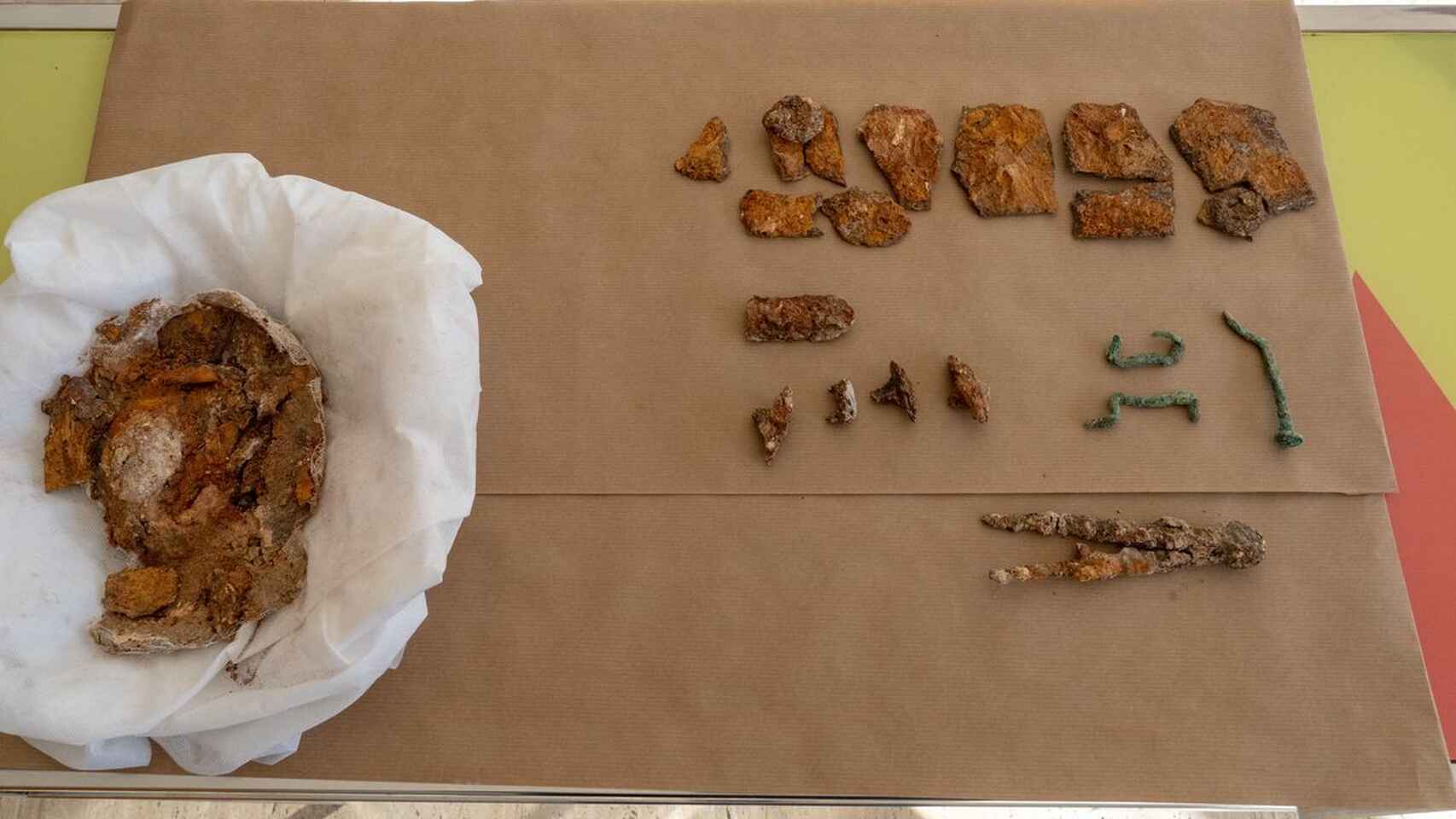No products in the cart.

During the restoration work of the Punic Wall of the city they have found a wooden and bronze shield and a compass associated with the conflict.
A wooden and bronze shield and a compass associated with the capture of Cartagena by the Roman general Scipio during the Punic Wars have been found during the restoration work on the Punic Wall of this city.
The findings have been produced during the archaeological intervention that has been carried out in the site to expand the knowledge about the construction of the wall by means of orthophotography.
Now researchers must catalog and certify the origin of the pieces to ensure that they correspond to the time of the clashes between the Carthaginian and Roman empires. “We are convinced that these new objects will help us to bring more light to a key period in the history of Cartagena,” said Ana Belén Castejón, mayor of the city.
As reported by the City Council in a statement, these works were intended to update the value of this property, apply a series of conservation treatments and document the wall with new technologies, managed by Cartagena Puerto de Culturas and which was erected at late 3rd century BC, probably coinciding with the founding of the city by Hasdrúbal. “Our city and its three millennia of history never cease to amaze us,” the mayor said.
The preserved section corresponded to the place where the gates of Qart Hadašt were located, which was raised by means of two parallel walls of large sandstone ashlars, from Canteras. In its interior compartments, called casemates, were formed through perpendicular walls of opus africanum, a construction system that alternates ashlars with masonry.
Taking of Cartagena
The Roman general Scipio the African took Cartagena in 209 BC. C., being a Roman possession since then with the name of Carthago Nova, and one of the most important Roman cities in Hispania. It was a lightning battle, since the Carthaginians did not expect the Roman offensive, who took the city and prohibited looting and respected the lives of its citizens.
From then on, the Carthaginians kept their capital in Hispania and also lost control over their silver mines, a large amount of food and weapons stored that allowed them to ensure the loyalty of peoples subjected in the past.
In 44 BC, Carthago Nova was the third city in Hispania, after Tarraco and Córduba, to be elevated to the rank of Roman colony with the name Colonia Vrbs Iulia Nova Carthago (C.V.I.N.C) constituted by citizens of Roman law.
The discovery of the shield and the compass has taken place with a parallel controversy about the possible existence of the palace of Asdrúbal on the Cerro del Molinete.
What’s your reaction?
Love0
Sad0
Happy0
Sleepy0
Angry0
Dead0
Wink0







